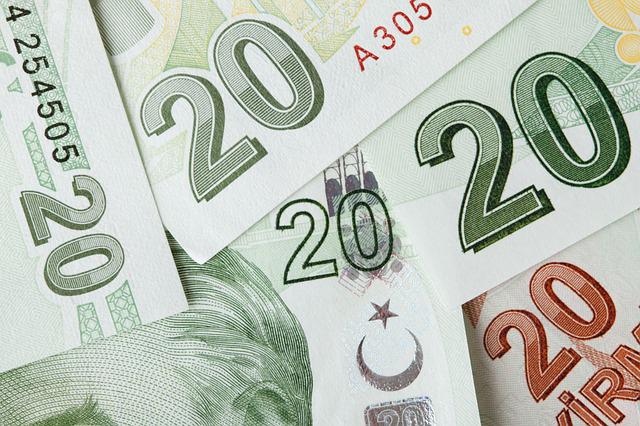November 9, 2023
INFLATION REPORT – Central Bank of the Republic of Türkiye
Annual consumer inflation increased by 23.3 points to 61.5% in the third quarter of 2023. The current reporting period saw significant price increases widespread across sectors. This was driven by the significant depreciation of the Turkish lira, wage adjustments, hikes in taxes and administered prices as well as upward movements in global energy prices, particularly in crude oil prices. In this period, inflation expectations increased significantly as well. Led by the depreciation of the Turkish lira, the combination of developments that are highly influential on price-setting behavior caused shocks to rapidly pass through to prices. Additionally, price increases in fresh fruits and vegetables, which exceeded their seasonal averages considerably in the past quarter, were another factor that added to inflationary pressures. Aggregate demand conditions decelerated in the third quarter, but remained inflationary.
Core indicators increased above expectations in the third quarter, yet the underlying trend of inflation has started to slow down as of September. As a result of the combination of multiple shocks that have a high impact on price-setting behavior, the seasonally adjusted monthly increases of core indicators rose above projections in July and August. Meanwhile, wage and exchange rate driven cost-side pressures as well as the effects of tax adjustments were largely passed through to inflation. Thus, the monthly rates of increase in core indicators started to weaken in September. Leading indicators suggest that the deceleration in underlying inflation became more pronounced in October.
Inflation is projected to be 65% at the end of 2023, and fall to 36% at the end of 2024, and to 14% at the end of 2025. As a result of the increase of inflation above forecasts due to exchange rates, supply-side effects in some unprocessed food products and fuel prices, coupled with additional impacts of this development on expectations, the year-end forecast has been revised upwards by 7 points to 65%. On the other hand, the end-2024 forecast has been raised to 36% stemming from revisions in the assumptions for administered prices and energy import prices. Moreover, volatilities in commodity prices, particularly petroleum, driven by geopolitical developments, the effects of tight monetary policy on global financial conditions, and uncertainties regarding administered prices and wages have been factored into the uncertainty band of inflation forecasts (Box 3.1).
It is projected that inflation will rise throughout the first half of 2024 and headline inflation will assume a steady decline as of the second half of 2024. The policy rate hikes as well as actions taken to strengthen the monetary transmission mechanism, such as quantitative tightening, selective credit policy and steps to simplify the macroprudential framework, started to be mirrored in financial conditions. Leading indicators give signs of a gradual balancing in domestic demand amid slower consumer loan growth and increased demand for Turkish lira savings instruments (Box 3.2). Medium-term projections are based on an outlook in which the monetary policy stance will be determined in a way that ensures a significant decline in inflation. This tight monetary policy stance is judged to highlight the balancing in domestic demand and the gradual improvement in the current account balance. Additionally, it is anticipated that with firm and steady adherence to monetary tightening, monthly inflation will decelerate in the short run and inflation expectations, which are highly sensitive to inflation realizations, will improve (Box 2.3).
Economic activity remained robust in the second quarter, due in particular to domestic demand. In the second quarter, Gross Domestic Product (GDP) increased by 3.8% on an annual basis, while quarterly growth accelerated and stood at 3.5%. The largest contribution to annual growth came from final domestic demand with 12.7 points. Most of this contribution stemmed from the significant increase in private consumption. Despite the decline in exports due to persistently weak external demand, imports increased drastically amid buoyant domestic demand, as a result of which net exports dampened growth by 6.3 points. On the production side, industrial sector value added remained weak consistent with the external demand outlook, while the services sector value added made a prominent contribution to growth.
Indicators for the third quarter point to a slowdown in growth momentum on a quarterly basis. The retail sales volume index and card expenditures indicate that although consumption demand continued to rise in the third quarter, its rate of increase slowed amid tightening financial conditions. Weak external demand continues to restrain production indicators. As of August, seasonally and calendar-adjusted industrial production increased by a limited 0.5% quarter-on-quarter in the third quarter. Similarly, employment growth was also limited in the third quarter. As of August, seasonally adjusted employment increased by 0.3% (111,000 people) on a quarterly basis. Meanwhile, the seasonally adjusted labor force participation rate fell by 0.1 points to 53.4%. Thus, in the third quarter, the unemployment rate decreased by 0.4 points quarter-on-quarter to 9.3%. High-frequency data suggest that demand in the labor market remains strong.
The annualized current account deficit decreased amid the strong course of services balance and the recent decline in the foreign trade deficit. Exports, which fell in July due to deliveries brought forward because of the religious holiday, recovered gradually in August and September as the calendar effects were eliminated, and followed an almost flat course in quarterly terms. Meanwhile, seasonally adjusted imports decreased on a quarterly basis as a partial reflection of the dampening impact of the tighter monetary policy stance. Although September data points to a slowdown in gold imports due to the quota measure introduced in the previous month, gold imports are still above their historical average. Energy imports, on the other hand, rose in September as the recently increasing global energy prices started to be directly reflected in the monthly energy imports bill, but they continued to decline on an annual basis. In this period, while seasonally adjusted imports of intermediate goods dropped by 5.2% compared to the previous quarter, imports of consumption and investment goods rose by 5.7% and 2.4%, respectively. The quarterly uptrend in these items lost pace as of the third quarter. Services revenues, which remained robust on the back of travel and transportation revenues, maintained their strong contribution to the current account balance throughout the year. In the first eight months of the year, travel and transportation revenues increased year-on-year by USD 4.1 billion and USD 0.3 billion to USD 30.5 billion and USD 22.8 billion, respectively.
While the downtrend in global headline inflation lost pace due to the rise in energy prices, central banks maintained their communication that they would continue to keep policy rates at levels that would help sustain the fall in inflation. In advanced economies, headline consumer inflation dropped by approximately 0.5 points to 3.7% and core inflation decreased by 0.6 points to 4.2% compared to the previous reporting period. On the other hand, headline inflation in emerging economies (excluding China and Türkiye) rose by 0.1 points to 5.4% while core inflation dropped by 0.3 points to 5.4%. Thus, inflation continues to hover significantly above the target level of 2% in advanced economies and the average target level of 3.5% in emerging economies.
Recently, monetary policies of advanced and emerging economies have started to diverge due to the country-based differences in inflation dynamics. Amid tighter financial conditions, the impact of monetary policy on inflation has become more evident. Between July and September, the Fed and the European Central Bank (ECB) raised their policy rates by a total of 25 and 50 basis points, respectively. The ECB also assessed that the current level of interest rates was consistent with the inflation target, signaling an end to the rate-hike cycle. Accordingly, the ECB kept the policy rate unchanged at its meeting in October. On the other hand, following the improvement in the inflation outlook, some emerging economies, whose policy rates have remained quite high, started to cut rates. However, central banks of some other emerging economies pointed to heightened global uncertainty, and raised their interest rates. Despite this divergence in policy implementation, the monetary tightness is expected to be maintained globally given that inflation remains above the targets.
The global risk appetite deteriorated due to the expectation that the monetary policies of major central banks will remain tight for a protracted period. In line with the deterioration in risk appetite, risk premium indicators in emerging economies increased, while Türkiye’s CDS premium, which declined sharply after June, stood at 413 basis points as of 27 October. The one-month implied volatility of the Turkish lira declined significantly in the same period to around 10%, while the 12-month implied volatility decreased to 27% as of 27 October. The CBRT’s gross international reserves maintained the strong upward trend that started in June, and rose to USD 126.1 billion as of 20 October. Despite the significant deterioration in risk perception for emerging economies and escalating geopolitical risks in the nearby region in the current reporting period, the weakening in Türkiye’s CDS premium and the Turkish lira remained relatively limited and international reserves continued to increase as a result of the disinflation-oriented monetary policy framework.
The monetary policy has produced its first visible effects on financial conditions. While loan growth and composition have normalized, demand for Turkish lira deposits has increased. Commercial loan flow, which weakened due to the fall in credit-deposit interest spread in May, has been restored thanks to the steps taken towards simplification of the macroprudential framework. Following a more balanced course due to these steps, the 13-week annualized growth rate of commercial loans stood at 16.4% as of 20 October. Meanwhile, the 13-week annualized growth rate of retail loans, which pose a risk to inflation by boosting domestic demand and reached 140% in May, declined to 41.8% as of 20 October. In the third quarter of the year, deposit rates started to increase on the back of the ongoing policy rate hikes, regulations to increase the share of Turkish lira deposits, and quantitative tightening steps. Accordingly, the share of Turkish lira deposits has grown whereas FX-protected and FX-denominated deposits have decreased.
Source: Central Bank of the Republic of Türkiye
Legal Notice: The information in this article is intended for information purposes only. It is not intended for professional information purposes specific to a person or an institution. Every institution has different requirements because of its own circumstances even though they bear a resemblance to each other. Consequently, it is your interest to consult on an expert before taking a decision based on information stated in this article and putting into practice. Neither Karen Audit nor related person or institutions are not responsible for any damages or losses that might occur in consequence of the use of the information in this article by private or formal, real or legal person and institutions.






